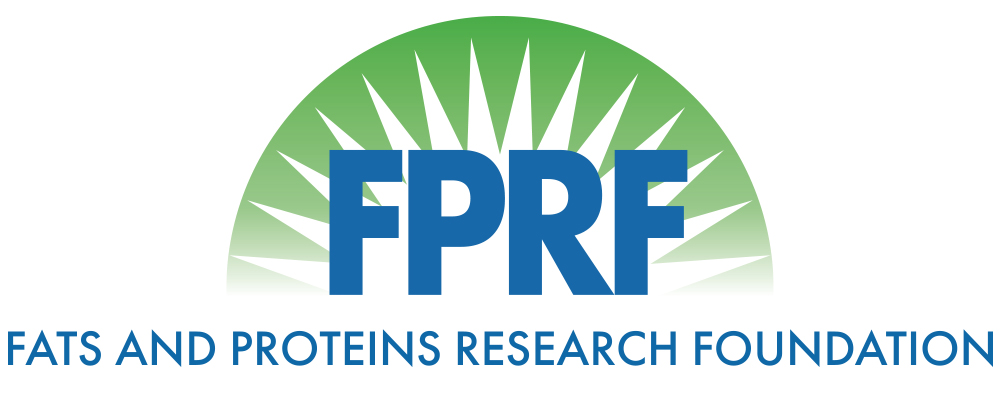Use of Fibrolytic Enzymes to Augment the Feeding Value of Supplemental Fat in High Forage Growing Diets for Feedlot Cattle
Title: Use of Fibrolytic Enzymes to Augment the Feeding Value of Supplemental Fat in High Forage Growing Diets for Feedlot Cattle
Principle Investigator: Richard Zinn
Year: 2000
Objective: The objective of this study was to evaluate the use of fibrolytic enzymes (combination of cellulase and xylanase) as a tool for overcoming the negative associative effects of supplemental fat on fiber digestion, and hence, energy intake and growth performance of feedlot cattle.
Lay Summary/Industry Summary: The interaction of fibrolytic enzyme supplementation and fat supplementation characteristics of ruminal and total tract digestion was evaluated in 4 steers with ruminal and intestinal cannulas. Consistent with previous studies, the addition of fat depressed ruminal digestion of OM (14%) and N (10%). The reduction in ruminal OM digestion was due, in part, to the ruminal indigestibility of dietary fat, itself. The decrease in ruminal N digestion was likely due to interactions between the level of dietary fiber, and associated effects of supplemental fat on fiber digestion. There was a supplemental fat by enzyme interaction on ruminal NDF digestion. In the absence of supplemental fat, ruminal NDF digestion was high (51%) and not affected by enzyme supplementation. As expected, fat supplementation depressed (30%, P < .05) ruminal NDF digestion. The addition of Fibrozyme to the fat supplemented diet increased (25%) ruminal NDF digestion to a level similar to that of non-fat supplemented diets (47%).
Our findings show that when the ruminal environment is favourable for optimal NDF digestion (ruminal NDF digestion accounts for 80% or more of what is considered maximal – usually, when ruminal NDF digestion exceeds 45%), limitations on NDF digestion are primarily associated with the nature of the fiber, itself, and its accessibility to the fibrolytic process. The addition of enzymes in this case would be expected to have little or no benefit. On the other hand, when the ruminal environment is not favourable for optimal NDF digestion, limitations on fiber digestion are largely a function of fibrolytic capacity, supplementation with fibrolytic enzymes will be beneficial. Hence, the supplemental Fibrozyme supplanted ruminal fibrolytic capacity that had been depressed by the supplemental fat. Fibrozyme supplementation increased (6%) ruminal degradation of feed protein. This effect was likely due to increased protein exposure to ruminal proteolytic processes in association with concomitant increases in fiber digestion. There were no treatment interactions on total tract digestion of OM, NDF, and N. Supplemental fat depressed total tract digestion of OM (5%), NDF (17%), and N (4%). Fibrozyme supplementation increased (8%) total tract digestion of NDF. Post-ruminal fatty acid digestion averaged 85 and 75%, respectively, for O and 4% fat supplemented diets.
The interaction of supplemental fat and fibrozyme on growth performance was evaluated in 96 crossbred steer calves. Steers were fed a conventional 12% forage finishing diet. Consistent with previous studies, fat addition increased ADG. However, enzyme addition to the non-fat supplemented diet increased ADG to a level that was numerically similar (99%) to that of the fat supplemented diets. There were no treatment effects on dry matter intake. Hence, changes in growth performance are attributable to improved dietary net energy. Fibrozyme supplementation increased the NEm and NEg value of the non-fat supplemented diet by 6.7 and 5. I%, respectively, but did not affect the NE values of the fat supplemented diet. Fat supplementation increased the NEm and NEg value of the diet by 6.7 and 8.7%. The NEm and NEg (NE”= .877NEm -.41) values for the yellow grease used in this trial were 6.25 and 5.07 Meal/kg, respectively. Based on level of fat intake the expected NEm and NEg values for supplemental fat are 6.11 and 4.95 Meal/kg, respectively, in close agreement with observed. We conclude that Fat supplementation increases the NE value of growing-finishing diets for feedlot cattle in a manner consistent with level of total fat intake. The negative associative effects of supplemental fat on ruminal fiber digestion can be largely overcome by the addition of fibrolytic enzymes to the diet. However, the practical significance of this, in terms of growth-performance may depend largely on total forage fiber intake. Fibrolytic enzyme supplementation may improve performance of feedlot cattle in a manner independent of its effects on total tract OM digestion.
Scientific Abstract: Four Holstein steers (522 kg) with cannulas in the rumen and duodenum were used in a 4 D 4 Latin square design to evaluate the interaction of supplemental fat ( 0 vs 4%) and fibrolytic enzymes (0 vs 15 g/d Fibrozyme) on characteristics of digestion. Fibrozyme was incorporated into the diet at the time of feeding. Feed intake was restricted to 2% ofBW. Fat supplementation depressed ruminal digestion of OM (14%, P < .01) and N (10%, P < .05). There was a supplemental fat by enzyme interaction (P < .10) on ruminal NDF digestion. In the absence of supplemental fat, ruminal NDF digestion was high (51%) and not affected by enzyme supplementation. In the absence of supplemental enzyme, fat supplementation depressed ruminal NDF digestion (30%, P < .05). Fibrozyme addition to the fat supplemented diet increased (25%, P < .05) ruminal NDF digestion to a level similar to that of non-fat supplemented diets (47%).
Fibrozyme supplementation tended (6%, P < .10) to increase ruminal degradation of feed N. There were no treatment effects (P = .45) ruminal microbial efficiency. There were no treatment interactions (P > .10) on total tract digestion. Fat supplementation depressed total tract digestion of OM (5%, P < .01), NDF (17%, P < .01), and N (4%, P < .05). Fibrozyme supplementation increased (8%, P < .10) total tract digestion ofNDF. We conclude that Fibrozyme supplementation can overcome the negative associative effects of supplemental fat on ruminal fiber digestion of growing-finishing diets fed to feedlot cattle.
Publications:
